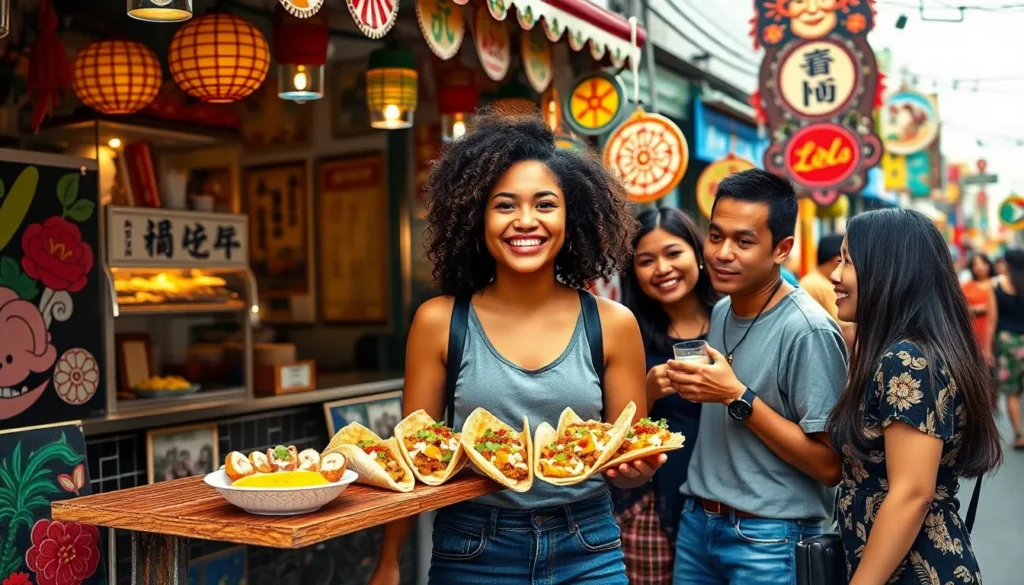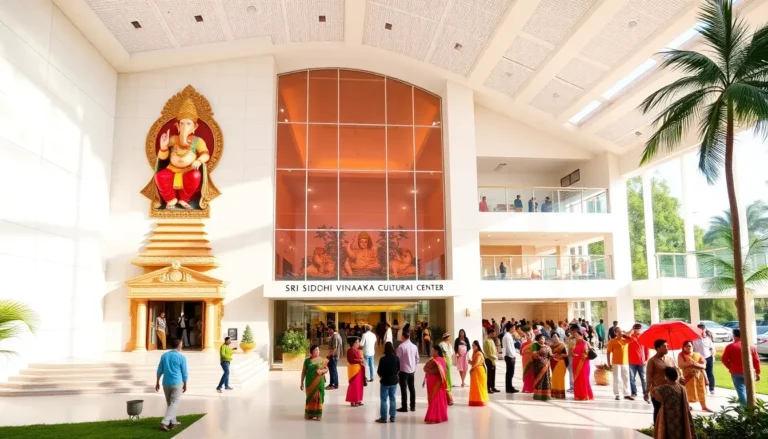Table of Contents
ToggleIn a world where cultures collide like a clumsy dance party, transcultural adaptation is the graceful move everyone needs to master. It’s the art of blending traditions, values, and perspectives to create something fresh and vibrant. Imagine a sushi taco or a Bollywood musical number set in a New York subway—it’s all about mixing flavors and rhythms that make life exciting.
Understanding Transcultural Adaptation
Transcultural adaptation involves integrating various cultural elements to create something unique. This process enriches societies, pushing boundaries and breaking down barriers. Traditional values coexist with new influences, leading to innovative expressions.
Culinary fusion serves as a prime example. Sushi tacos illustrate how ingredients from different cultures blend seamlessly on one plate. Individuals experiment with flavors, attracting diverse audiences and creating new culinary experiences.
Artistic collaborations exemplify transcultural adaptation. Bollywood performances incorporate Western dance styles, appealing to broader demographics. Artists infuse different cultural narratives, encouraging dialogue and mutual understanding.
Language also plays a critical role in transcultural adaptation. Multilingual communities thrive by incorporating words and phrases from diverse languages. This linguistic interplay fosters inclusivity, promoting cultural exchange.
Fashion demonstrates transcultural adaptation too. Designers combine traditional textiles with modern cuts, producing garments that resonate globally. Fashion shows reflect this blend, showcasing designs that celebrate cultural heritage and contemporary trends.
In education, transcultural adaptation proves valuable. Curricula that include global perspectives prepare students for a multicultural world. Educational institutions embrace diversity, encouraging students to appreciate various viewpoints.
Organizations benefit from transcultural adaptation as well. Companies that embrace diverse teams inspire creativity and innovation. Employing varied cultural insights leads to improved problem-solving and adaptability in the marketplace.
Ultimately, transcultural adaptation signifies a vibrant interplay of cultures. It encourages individuals to explore differences while fostering a sense of belonging. This dynamic process enhances creativity, enriching societies globally.
The Importance of Transcultural Adaptation

Transcultural adaptation plays a vital role in today’s interconnected world. This process not only enriches cultural experiences but also promotes inclusivity.
Cultural Sensitivity
Cultural sensitivity involves understanding and respecting diverse backgrounds. Engaging with multiple cultures requires awareness of differing customs and practices. Organizations benefit from culturally sensitive approaches by fostering inclusive environments. Employees from various backgrounds feel valued and empowered. Communities that embrace cultural sensitivity enhance collaboration and dialogue among members.
Emotional Intelligence
Emotional intelligence facilitates effective communication across cultures. Recognizing emotional cues helps navigate complex cultural interactions. Individuals equipped with emotional intelligence can build strong relationships in diverse settings. It allows them to empathize and respond appropriately, leading to constructive outcomes. Organizations employing emotionally intelligent leaders encourage adaptability and resilience within culturally diverse teams. Understanding emotions transforms challenges into opportunities for growth.
Factors Influencing Transcultural Adaptation
Transcultural adaptation depends on several key factors that shape individuals’ experiences within diverse cultures.
Individual Characteristics
Personality traits significantly influence how someone adapts to new cultural environments. Open-minded individuals often embrace change and actively seek out new experiences. Emotional intelligence plays a crucial role in understanding and responding to diverse cultural cues. Additionally, prior exposure to different cultures helps individuals navigate their new surroundings more easily. Adaptive skills, such as resilience and flexibility, foster a smoother transition into varying cultural contexts.
Environmental Context
The surrounding environment affects the ease of transcultural adaptation. Supportive communities create an atmosphere that encourages cultural exchange and acceptance. Access to resources, like language classes or cultural organizations, further facilitates integration. Socioeconomic factors impact the opportunities available for individuals to interact with other cultures. Government policies and societal attitudes also shape the receptiveness of the environment toward newcomers.
Strategies for Effective Transcultural Adaptation
Transcultural adaptation requires intentional strategies to effectively blend diverse cultural elements. Education and awareness play critical roles in fostering understanding and respect among different cultures.
Education and Awareness
Curriculums that incorporate global perspectives prepare individuals for multicultural interactions. Workshops focusing on cultural competence enable participants to engage with diverse backgrounds. Resources such as literature and documentaries highlight various traditions, enhancing empathy and insight. Training programs emphasizing language skills encourage clearer communication across cultures. Leaders within organizations can promote awareness by hosting cultural events, celebrating diversity, and facilitating discussions around inclusion.
Community Engagement
Active involvement in multicultural communities fosters connections and collaboration. Participating in local cultural festivals creates platforms for cultural exchange and shared experiences. Volunteer opportunities within diverse neighborhoods enhance relationships and understanding among individuals. Community organizations can host dialogue sessions, allowing voices from various backgrounds to share their stories. Establishing mentorship programs encourages knowledge sharing and supports individuals adapting to new cultural environments.
Transcultural adaptation stands as a powerful testament to the beauty of cultural exchange. It creates opportunities for individuals and communities to explore new dimensions of creativity and understanding. By embracing diverse influences, societies can foster inclusivity and innovation, enriching the human experience.
The journey of transcultural adaptation is ongoing, shaped by individual traits and environmental factors. As people engage with different cultures, they not only enhance their own perspectives but also contribute to a more connected world. This dynamic process encourages empathy and collaboration, paving the way for a future where cultural diversity is celebrated and valued.







